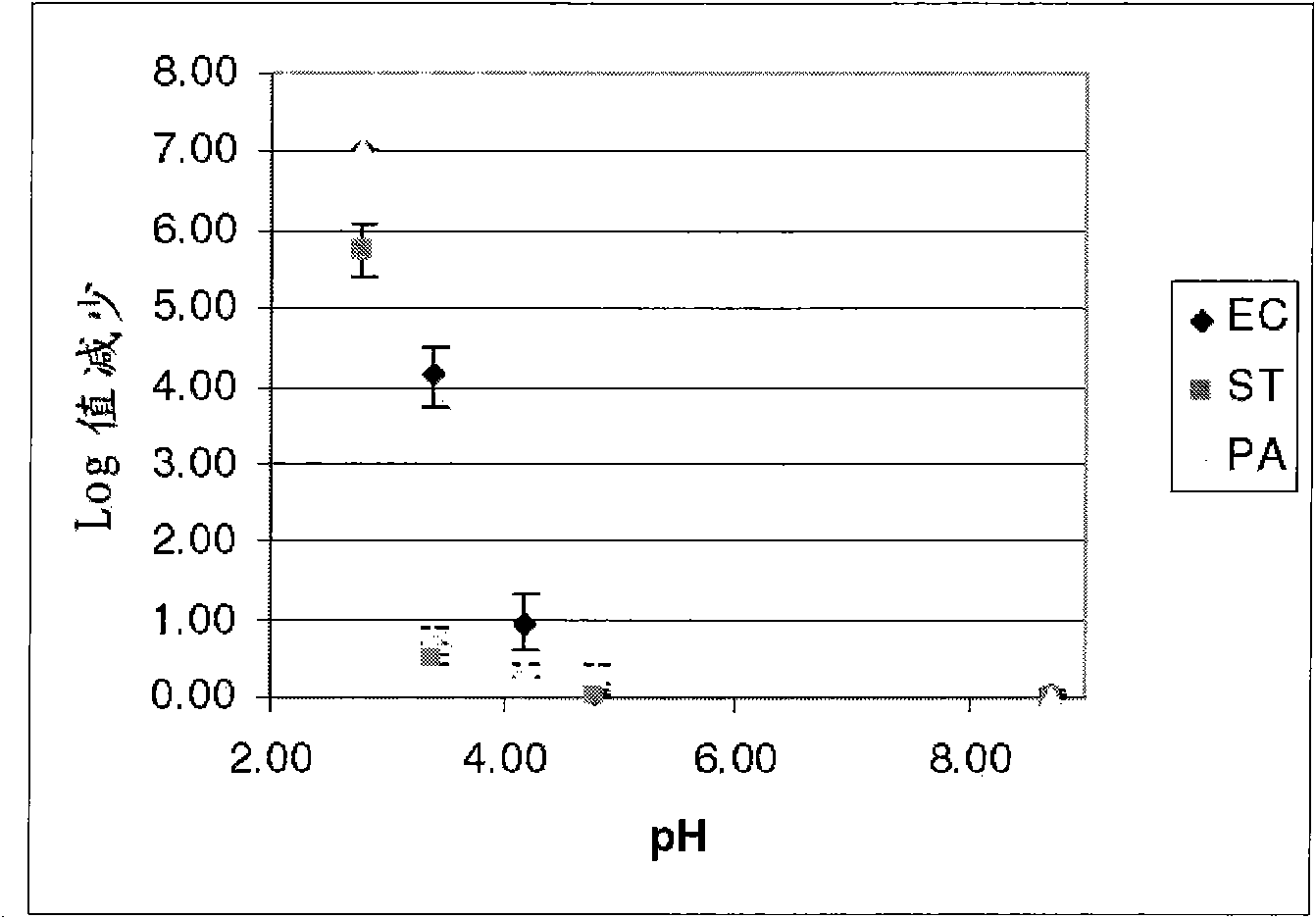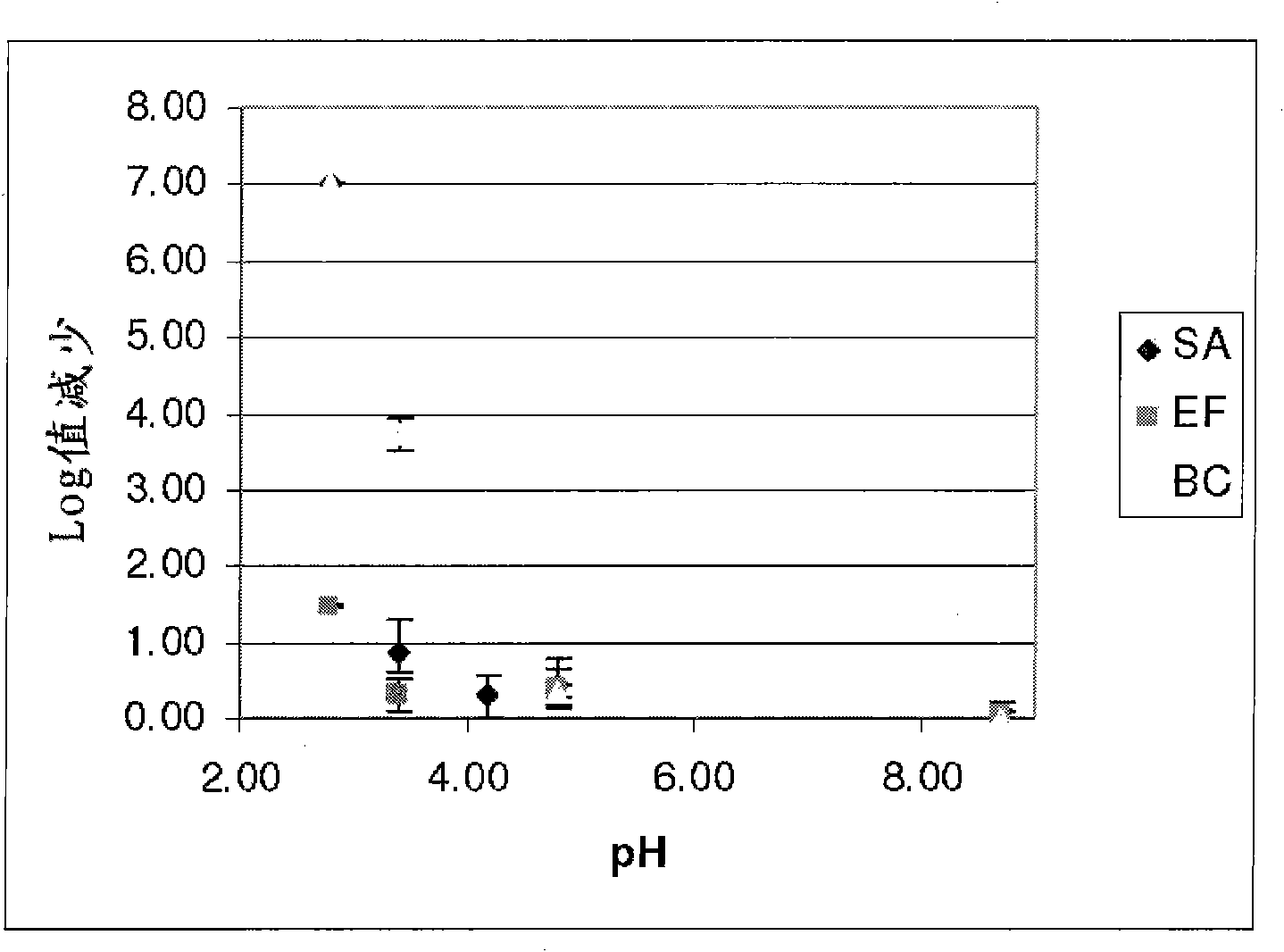Antimicrobial agent, method of preparing an antimicrobial agent and articles comprising the same
An anti-microbial agent and anti-microbial technology are applied in the fields of inhibiting the growth of microbial substances, producing anti-microbial articles, and anti-microbial compositions, and can solve the problems of insufficient research on the anti-microbial performance of dialdehyde polysaccharides.
- Summary
- Abstract
- Description
- Claims
- Application Information
AI Technical Summary
Problems solved by technology
Method used
Image
Examples
Embodiment 1
[0112] Example 1: Evaluation of the effect of DAS on bacteria
[0113] This example serves to demonstrate the antibacterial activity of heated DAS against three different strains of Gram-negative bacteria and three different strains of Gram-positive bacteria. The minimum lethal concentration (MLC) of DAS against Gram-negative and Gram-positive bacteria is shown in Table 3.
[0114] Table 3: MLC (weight percent) of DAS showing 7 log reduction in bacteria after 1 hour exposure test.
[0115]
EC
ST
PA
SA
EF
BC
DAS(%)
0.8
2.1
1
0.8
1
0.2
pH
3.2
2.9
3.1
3.2
3.1
3.5
[0116] After the heating or "boiling" step, the DAS suspension in water is acidic. To understand the antimicrobial effect of DAS on bacteria (ie, whether acid or aldehyde functional groups contribute to the antimicrobial effect), additional experiments were performed. Use PBS and DAS to study the effect ...
Embodiment 2
[0119] Example 2: Effect of DAS Ultrasonic Treatment on Bacterial Inactivation
[0120]This example serves to demonstrate the antibacterial activity of sonicated DAS against Gram-negative and Gram-positive bacterial strains. DAS samples (2.7 wt%) were sonicated for different times and the effect of sonication on the antibacterial activity of DAS was evaluated. The pH values of 2.7% DAS sonicated for different times were almost the same, ie about pH 3. Figure 7 The results in show the effect of DAS sonication time on bacterial log reduction. Such as Figure 7 As shown, sonication of DAS for at least 15 minutes resulted in a significant increase in the antimicrobial activity of DAS against EC (Gram-negative) and SA (Gram-positive). These results also confirmed that the antimicrobial activity of DAS was attributed to the activity of aldehyde groups. The particle size of DAS in the sonicated suspension is micron. Once the DAS gel was broken by sonication, more aldehyde gro...
Embodiment 3
[0121] Embodiment 3, assess the effect of DAS on bacterial virus
[0122] This example is used to demonstrate the antiviral activity of DAS against bacterial viruses. For phage experiments, heated DAS samples were used. The antiviral activity of DAS against two bacterial viruses (PRD1 and MS2) is shown in Figure 7 and 8 middle. Unlike the effect of pH on the antibacterial activity of PBS, no effect of pH on the antiviral activity of PBS against these two bacterial viruses was observed. In both low pH (pH=3) and high pH (pH=8.7) samples, DAS was able to completely kill PRD1 and MS2 phage during the 4 hour incubation. However, if Figure 8 As shown, at pH=8.7, DAS can completely kill MS2 phage in only 1 hour. Such as Figure 7 As shown, a lower level of activity against PRD1 was observed. At pH = 3, the level of activity of DAS against PRD1 was higher than that against MS2 in the 1 hour test. Compared to the antibacterial results, the activity of DAS against bacterial ...
PUM
| Property | Measurement | Unit |
|---|---|---|
| The average particle size | aaaaa | aaaaa |
Abstract
Description
Claims
Application Information
 Login to View More
Login to View More - R&D Engineer
- R&D Manager
- IP Professional
- Industry Leading Data Capabilities
- Powerful AI technology
- Patent DNA Extraction
Browse by: Latest US Patents, China's latest patents, Technical Efficacy Thesaurus, Application Domain, Technology Topic, Popular Technical Reports.
© 2024 PatSnap. All rights reserved.Legal|Privacy policy|Modern Slavery Act Transparency Statement|Sitemap|About US| Contact US: help@patsnap.com










